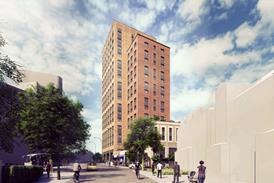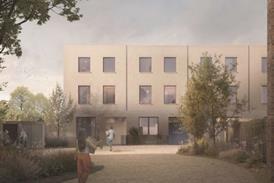This is the fourth in our regular series of CPD modules, designed to help you broaden your knowledge while you work
*** This module is now open until 22 September 2010 ***
Click here to take this CPD Module
How to use this module: BD Reviews’ free continuing professional development distance learning programme is open to everyone who wants to develop and improve their professional knowledge and skills. These modules can contribute to your annual programme of CPD activity to help you maintain membership of professional institutions and bodies. All you have to do is read this module then take the questions via the link below or at the bottom of the page.
Raw materials
There are three, or in some cases four, raw materials used in the manufacture of rubber flooring: rubber, natural minerals, colour pigments and, for certain products, industrially produced rubber.
Natural rubber is a renewable material extracted from the sap of the tropical Pará rubber tree (Hevea brasiliensis) on rubber plantations in South America, by a process known as tapping. A shallow 45° incision is made in the bark of the tree and as the white or yellow latex drips out it is collected in a small bucket, before being strained to produce raw rubber in solid form.
There are typically three harvests a year from the plantations, and no harm comes to trees during the extraction process. Rubber trees naturally sequest high levels of carbon dioxide, and so can help to mitigate climate change.
Natural minerals also make up 40% of finished rubber flooring products. Nora uses a form of chalk sourced in western Germany within 200 miles of its manufacturing plants. This acts as a bulking agent, it assists in the stabilisation process and acts as a natural fire retardant.
More than 90% of Nora colour pigments come from vegetable sources and contain no heavy metals.
To produce some of the most durable flooring products, small amounts of high-quality industrially produced rubber may also be added.
Manufacturing process
There are five stages to preparing the finished flooring product from the raw materials: pre-mixing, blending, homogenising, vulcanisation and moulding, and finishing.
The raw materials are first mixed in a churning oven known as a kneader at a constant warm temperature. Each kneader batch will make approximately 40sq m of finished product.
These small batches are then subjected to a thorough blending process to enable colour consistency over very large quantities of product and guarantee a colour match. The mixture is masticated on giant rollers to produce required thicknesses from 2mm to 22mm.
Vulcanisation is the most important part of the manufacture of rubber floor coverings.
It uses high temperatures and pressures – typically 700°C and 1200 bars – to break down the molecular structure of the rubber and reform it, creating a crisp skin on the surface. The final finishing process includes sanding, die-cutting, final quality checks, packaging and shipment.
All of the waste from the rubber manufacturing process can be reused. At Nora, all waste products are recycled to produce flooring accessories such as nosings, angles and skirtings, composite underlay for acoustic products, and the Ecoplan sheet range which is made from up to 75% recycled material.
Benefits of vulcanisation
This is the key to the durability of tile or sheet rubber flooring products. A sophisticated vulcanisation process can achieve a very dense surface which is extremely wear resistant and can offer a product life of up to 30 years.
For example, when it was planning an office refurbishment US telecoms company AT&T carried out an independent study of seven different flooring types over two years.
It found that rubber outperformed all other types on scuff resistance under the international ASTM test standard D3714.
Vulcanisation can also produce the following benefits:
- No need for regular coatings to maintain durability of flooring;
- Vulcanised surfaces are resistant to chemical products, which makes thorough cleaning possible without deterioration;
- The moulding process means that rubber products have a recovery factor, and will return to their original shape even after heavy pressures;
- They offer permanent resilience, which means they are suitable for use in controlled environments such as prisons and psychiatric hospitals.
Other benefits of rubber flooring
Due to the materials and manufacturing process of rubber flooring products, they are also:
- Resistant to cigarette burns;
- Fire retardant and toxicologically safe in the event of fire, because they do not produce hydrochloric acid, dioxins or furans;
- Offer high acoustic performance, with sound absorption of typically 6-8dB for sheet flooring, 10-12dB for tile flooring and up to 20dB for specialist acoustic products;
- Offer high stress load capability and impact resistance;
- Slip resistant;
- PVC-free;
- All flooring products are antistatic, and some can offer electrostatic discharge (ESD) properties, which means that they are suitable for use in electrically sensitive areas such as operating theatres or communication centres;
- Bacteriostatic, so suitable for use in hospitals and other medical facilities.
Hospitals present some of the highest demands on floor coverings. A study carried out in a Florida hospital compared the lifecycle costs of different types of flooring over 15 years. In 1999, the costs of installing, cleaning and maintaining 1000 square-foot of each type of flooring was measured, and the rubber flooring was found to cost significantly less than sheet vinyl, vinyl tiles, linoleum and carpet.
Volatile Organic Compounds
Some manufacturers’ rubber floors do not emit volatile organic compounds (VOCs), which can cause respiratory or allergic effects in the built environment.
This also means their composition does not change over time and they are dimensionally stable. As the flooring will not change shape or size it does not need to be welded into place, so there are no joints where germs or dirt may gather.
Click here to take this CPD Module
*** This module is now open until 22 September 2010 ***
About Nora
![]()
Nora systems benefit from more than 60 years’ experience of producing rubber flooring for a diverse range of applications.
The inherent properties of rubber, and Nora’s own commitment to the environment, have enabled Nora to achieve the ISO 14001 standard for environmental management, and all Nora plan floor coverings are BREEAM “A” rated.
It has also received the German Blue Angel qualification and the Greenguard Indoor Air Quality award for low VOC emissions.
For further information, go to www.nora.com
















No comments yet